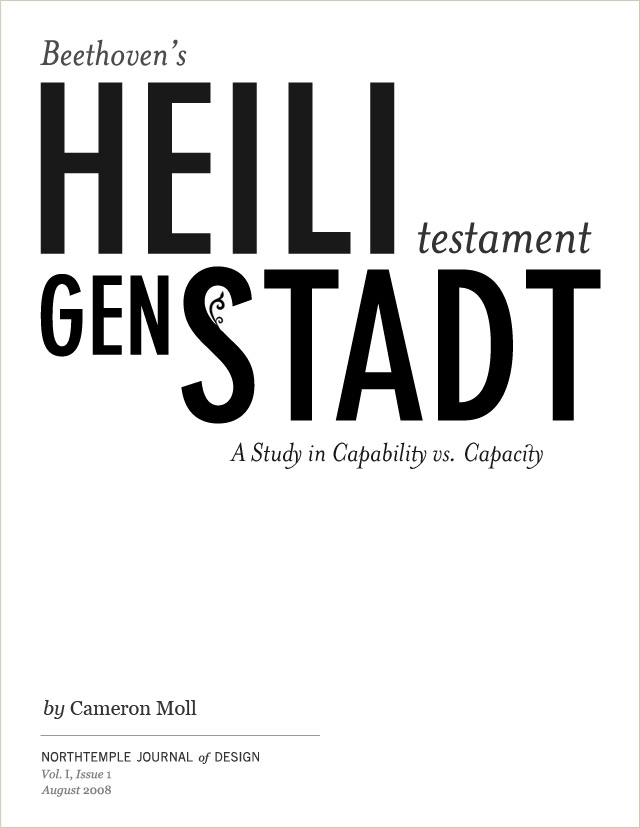
As one who shares a love of design and music equally, I’m intrigued by the creative underpinnings of each discipline. The overlap is readily apparent—composition, structure, rhythm, unexpectedness, beauty.
It should come as no surprise, then, that occasionally when I write about one discipline, I do so by alluding to the other. Yet, the following story is rather ironic because it’s about Beethoven but has nothing to do with music (or design, for that matter). Or perhaps it has everything to do with it.
Around 1796, Ludwig van Beethoven began suffering from a loss of hearing. By 1814, one of the greatest composers of the 19th century and arguably of all time was completely deaf.
Imagine yourself in his position: You’re quickly gaining fame as a virtuoso pianist and an accomplished composer. But in public conversation, you, whose hearing is critical to your craft, can hardly hear what the person next to you is saying.
It was this very social paradox that led Beethoven to withdraw from society towards the end of the 18th century. At the recommendation of friends and medical practitioners, Beethoven retreated to rural Heiligenstadt, Austria, where distance from city life – and noise – was believed to be a means of remedying his loss of hearing.
It didn’t work. In fact, isolation might have only increased despair about his condition and about life in general. He contemplated suicide in earnest, but fortunately for all of us, he eventually rejected the notion.
It was during his stay in Heiligenstadt that Beethoven composed, in my opinion, one of the greatest “works” of his career. It came in the form of a letter written to his brothers Carl and Johann, and has since become known as the Heiligenstadt Testament. Penned in 1802, about halfway through his life at age 31, the letter was found in his room after his death in 1827.
Among other things, his letter addresses the reasoning for withdrawing from society, as painfully evidenced by these examples:
[W]hat a humiliation for me when someone standing next to me heard a flute in the distance and I heard nothing, or someone standing next to me heard a shepherd singing and again I heard nothing. Such incidents drove me almost to despair; a little more of that and I would have ended me life – it was only my art that held me back.
And then Beethoven writes the following, which unequivocally manifests a yearning to produce all that he had the capacity of producing, in whatever amount of time his life would lend, and irrespective of his deficiencies – a yearning I think we’re all competent to strive towards:
Ah, it seemed to me impossible to leave the world until I had brought forth all that I felt was within me. So I endured this wretched existence – truly wretched for so susceptible a body, which can be thrown by a sudden change from the best condition to the very worst… Perhaps I shall get better, perhaps not; I am ready.”
And strive he did. Two of his greatest and most widely recognized works, Symphony No. 5 (1808) and Symphony No. 9 (1824), were composed in the years following Heiligenstadt, even as he was nearing complete deafness.
Symphony No. 5 (sample):
Symphony No. 9 (sample):
This account reminds me of a question I’m asked often: What does it take to go from good designer to great designer? Though there’s no perfect formula and certainly no brief answer that can do this question justice, Beethoven’s Heiligenstadt Testament comes to mind. Good designers are inhibited by a myopic view of their current capability, whereas great designers recognize their capacity to produce great work extends far beyond the limits of their capability. Great designers find a way to bridge the chasm between capability and capacity through diligent practice and study, sheer determination, and acute thinking. Yes, thinking. As master thinker Edward de Bono once put it, “To regard thinking as a skill rather than a gift is the first step towards doing something to improve that skill.”
In the end, Beethoven bridged the chasm, which leaves me asking just one question: What do I have yet to bring, and possess the capacity of bringing, forth before leaving this world?